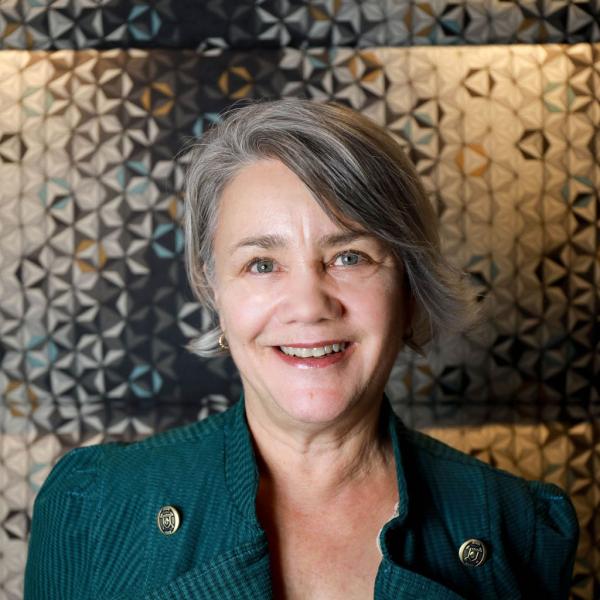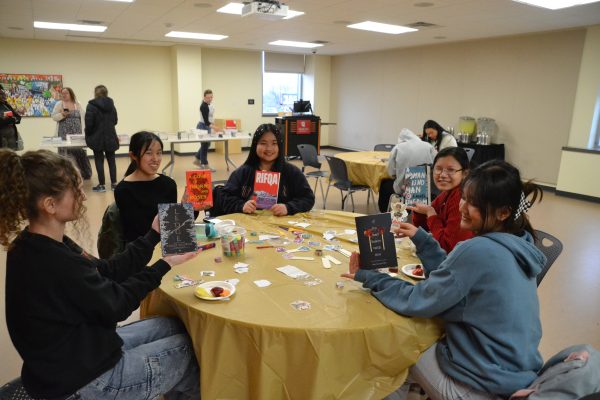Post-election reflections on campus
A follow-up to ‘Piper power at the polls’ from Oct. 24.
November 16, 2018
Last Tuesday’s midterm elections ushered in a Democratic House of Representatives and an increased Republican Senate majority, flipped seven governorships and numerous other statewide offices and legislatures to Democratic control, and boasted a projected turnout rate not seen for a midterm in half a century.
The United States Election Project estimates that 48.8 percent of eligible voters cast ballots nationwide, and 64.2 percent of eligible voters in Minnesota.
In Minnesota, Democrats claimed all statewide offices, including two Senate seats, the governorship, attorney general, Secretary of State and auditor. Congressional districts three and four flipped from Republican to Democratic control, and districts one and eight vice versa, leaving no party with a net House gain in the state.
Although official National Study of Learning, Voting and Engagement (NSLVE) data regarding student voter turnout has not yet been tabulated, Hamline Undergraduate Student Congress (HUSC) President Liam Davis Temple saw signs of surging enthusiasm on Nov. 6.
In collaboration with the Wesley Center, HUSC spent 13 hours on election day driving Hamline students to the nearby polling station, located at the Hamline Hi-Rise. Out of 859 students who live on campus, about 180 took advantage of the free rides to the polls, according to Davis Temple.
Davis Temple said that in the 2014 midterm elections, 999 people voted at the Hamline Hi-Rise precinct, including absentees; whereas in 2018, 1,129 people voted there on election day alone.
“Just, like, in this area turnout increased,” Davis Temple said, “obviously that’s not just Hamline students, but you can kind of maybe guess that that might’ve had to do with more Hamline students voting.”
Plenty of students, however, chose to vote in their home districts rather than at Hamline.
Sophomore Max Collins lives in Minnesota’s third Congressional district, where Democrat Dean Phillips defeated incumbent Republican Rep. Erik Paulsen by 11 points.
“I was very happy with the results of that, ‘cause I was for Dean Phillips… I was surprised by how badly Erik Paulsen got his butt kicked by him,” Collins said. “I’m excited to see what he’s going to bring to Congress and to see what he is going to want to, you know, focus on and what he’s promised for his campaigning.”
Senior Karl Dettmann, a former Republican caucus delegate in Carver County, wanted to vote absentee due to the mayoral race in his hometown of Norwood Young America, in which he supported incumbent Democrat Carol Lagergren due to his distaste for her challenger, former Republican mayor Tina Diedrick, whom he regarded as establishment. Diedrick ultimately recaptured her former seat.
Besides Lagergren and State Rep. Jim Nash (R-47A), Dettmann cast the rest of his ballot in favor of independent candidates.
“I’m a third-party supporter in general, meaning I will support a party because they are a third party, not necessarily because I agree with their views. But I will support a party because I want their voice to be heard,” Dettmann said. “I also voted for the non-incumbent judges that were running… I just thought, you know, give somebody else a turn… they’re not going to judge things that differently, and if they’re a bad judge, there are other ways of removing them besides not voting for them.”
Dettmann cited the recent Senate debate held in Sundin Hall between Democrat Tina Smith and Republican Karin Housley when explaining his support for third parties.
“The debate happened. Everybody was like ‘oh my gosh, the debate.’ I was like, ‘I don’t like it,’ because there’s only two people on the stage, Karin Housley and Tina Smith, and there [were] four candidates on the ballot. Where were the other two candidates?”
Sophomore Jessie Booth, a nontraditional student, warned against the dangers of groupthink.
“I worry that some voters… vote just to be trendy,” Booth said.
Not all students participated in the election, however. Although junior Jordan Woelfel is a registered voter in his hometown of Redwood Falls, he says he did not think about acquiring an absentee ballot.
“I was busy with schoolwork,” Woelfel said.
Previous NSLVE data suggests that one in three Hamline students are non-voters.
“I think students were interested in the election, I had a sense that most of them were registered to vote,” Political Science Professor Joseph Peschek said. “Hamline students probably, not all of them… lean somewhat left of center, and given that the Democrats did well in the elections, I detected a lot of people were pleased and sighed… [in] relief.”





